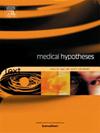Beyond antibiotics: 3d-transition metal ions − serum albumin −indocyanine green complex as a novel multifunctional NIR-responsive therapeutic platform for treating diabetic foot ulcer
IF 2.1
4区 医学
Q3 MEDICINE, RESEARCH & EXPERIMENTAL
引用次数: 0
Abstract
Diabetic Foot Ulcer (DFU) is a severe chronic diabetes mellitus complication with delayed wound healing. A number of factors such as antibiotic-resistant bacterial infection, ischemia, matrix metalloproteinases (MMPs)- mediated degradation of granulating tissue, fibroblast senescence and hypoalbuminemia contribute to the severity of DFU. Present therapies are often found to be inactive since they fail to provide a comprehensive solution. To address this challenge, here we have hypothesized that a novel NIR-responsive phototherapeutic complex made with 3d-transition metal ions (preferably Zn2+), serum albumin (SA) and indocyanine green (ICG) will effectively work as a multifunctional therapeutic solution for the treatment of DFU. Under exposure to 808 nm Laser, ICG present in the Zn2+-SA-ICG complex will generate heat (photothermal effect) and ROS (photodynamic effect) which will kill the antibiotic-resistant bacteria in the wound milieu, Zn2+ released from the complex will activate the endothelial cells and help in angiogenesis, and SA will serve as a sacrificial substrate to nullify the degrading effect of MMPs and will activate fibroblast and compensate the hypoalbuminemia. The hypothesis can be tested through a series of biophysical experiments, in vitro microbial and cellular studies, in vivo analysis in MRSA bacteria-infected wound models in STZ-induced diabetic mice and finally through clinical trials. If successful, a new domain of clinical management for DFU will be opened. This will also facilitate the pathway of similar innovation for even better therapy.
超越抗生素:3d过渡金属离子-血清白蛋白-吲哚菁绿复合物作为治疗糖尿病足溃疡的新型多功能nir反应治疗平台
糖尿病足溃疡(DFU)是一种严重的慢性糖尿病并发症,伴有伤口愈合延迟。抗生素耐药细菌感染、缺血、基质金属蛋白酶(MMPs)介导的肉芽组织降解、成纤维细胞衰老和低白蛋白血症等多种因素导致了DFU的严重程度。目前的治疗方法往往是无效的,因为它们不能提供一个全面的解决方案。为了解决这一挑战,我们假设一种由3d过渡金属离子(最好是Zn2+)、血清白蛋白(SA)和吲哚菁绿(ICG)制成的新型nir响应光疗复合物将有效地作为治疗DFU的多功能治疗方案。在808 nm激光照射下,存在于Zn2+-SA-ICG复合物中的ICG会产生热(光热效应)和ROS(光动力效应),杀死伤口环境中的耐药细菌,复合物释放的Zn2+会激活内皮细胞并促进血管生成,SA作为牺牲底物抵消MMPs的降解作用,激活成纤维细胞并补偿低白蛋白血症。通过一系列生物物理实验、体外微生物和细胞研究、MRSA细菌感染stz诱导的糖尿病小鼠创面模型的体内分析,最后通过临床试验对这一假设进行验证。如果成功,将打开DFU临床管理的新领域。这也将促进类似创新的途径,甚至更好的治疗。
本文章由计算机程序翻译,如有差异,请以英文原文为准。
求助全文
约1分钟内获得全文
求助全文
来源期刊

Medical hypotheses
医学-医学:研究与实验
CiteScore
10.60
自引率
2.10%
发文量
167
审稿时长
60 days
期刊介绍:
Medical Hypotheses is a forum for ideas in medicine and related biomedical sciences. It will publish interesting and important theoretical papers that foster the diversity and debate upon which the scientific process thrives. The Aims and Scope of Medical Hypotheses are no different now from what was proposed by the founder of the journal, the late Dr David Horrobin. In his introduction to the first issue of the Journal, he asks ''what sorts of papers will be published in Medical Hypotheses? and goes on to answer ''Medical Hypotheses will publish papers which describe theories, ideas which have a great deal of observational support and some hypotheses where experimental support is yet fragmentary''. (Horrobin DF, 1975 Ideas in Biomedical Science: Reasons for the foundation of Medical Hypotheses. Medical Hypotheses Volume 1, Issue 1, January-February 1975, Pages 1-2.). Medical Hypotheses was therefore launched, and still exists today, to give novel, radical new ideas and speculations in medicine open-minded consideration, opening the field to radical hypotheses which would be rejected by most conventional journals. Papers in Medical Hypotheses take a standard scientific form in terms of style, structure and referencing. The journal therefore constitutes a bridge between cutting-edge theory and the mainstream of medical and scientific communication, which ideas must eventually enter if they are to be critiqued and tested against observations.
 求助内容:
求助内容: 应助结果提醒方式:
应助结果提醒方式:


